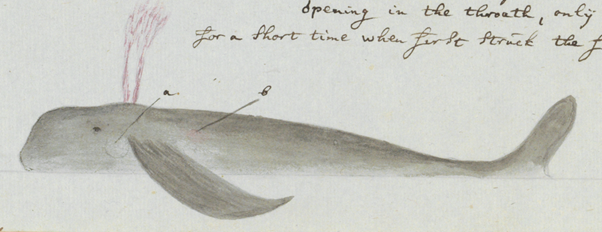A Whaler Comes into Port (2)
Gary L. Sturgess
6/4/20252 min read


In 1792, a London whaler named the Chesterfield sailed into the Great Southern Ocean, hunting southern right and sperm whales in the vicinity of Bouvet Island, which lies at 54º South, close to the Antarctic continent. She was under the command of Matthew Bowles Alt, who had been a midshipman on the Sirius in 1787 and had gone home in 1790.
As noted in an earlier Catspaw, A Whaler Comes into Port (1), recently discovered records of the Dutch East India Company reveal that she made her way to the Cape of Good Hope twice, before sailing to Port Jackson in November 1792 for repairs.
Whilst researching the papers of Robert Jacob Gordon, a Dutch-born Scot who was the commander of the Dutch forces at the Cape in the 1780s and 1790s, I turned up a note recording comments made by ‘Captain Alt’ about the South Right Whale.
Gordon was a well-known explorer and highly regarded naturalist. He socialised with many of the European officers and gentlemen who visited the Cape, and advised Captain Arthur Phillip on what plants he should take to the intended colony in New South Wales.
This note, in Gordon’s handwriting, has the words ‘Captain Alt’ in the bottom left-hand corner, and it is clear that while he was at the Cape, Alt met Gordon and shared his knowledge of the whale. The text is as follows:
the rigth or black whale, as the Whalers call him, [is] generally from 12 feet English when first calved to about 60 or 70 feet long, has the whale bone or beard, is the fish generally caught about the Cape of good hope. [Referring to the drawing] a. b. is the best place where he must be attacqued trowing the ÿron [iron] keeping free from his fin with which he strikes severe but much stronger with his tail by the Whalers flook [fluke]. When the yron is felt generally goes down but not so deep as the Sperm Whale because he keeps in Soundings, but sometimes beats and figth about. Calf like all whale but one ÿoung, and once a year, to know which was found out by a Whaler how found the yron next year in the same cow then again with calf which he struck the year before, and of which the Calfe was only killed. they generally shift down the Coast of brasil [Brazil] to Africa, generally coming to the last coast in may and return towards november, Calf the whole year through. the animal is not reckoned very Sagacious, the Sperm Fish more, as the last will Sometimes when wounded run at the boat, and bite it to pieces. this whale has but a small opening in the throath, only about to run one’s arm. for a short time when first struck the fish will run 20 mile per hour.
Illustration of a whale from Colonel Gordon’s note, RijksMuseum, Amsterdam, Robert Jacob Gordon Collection, RP-T-1914-17-237
Contact us
Connect with us
Botany Baymen acknowledges the traditional custodians of country throughout Australia and respects their connection to land, water and community.
© Botany Baymen 2024. All rights reserved.
You may download, display, print and reproduce this content for your personal or non-commercial use but only in an unaltered form and with the copyright acknowledged.

